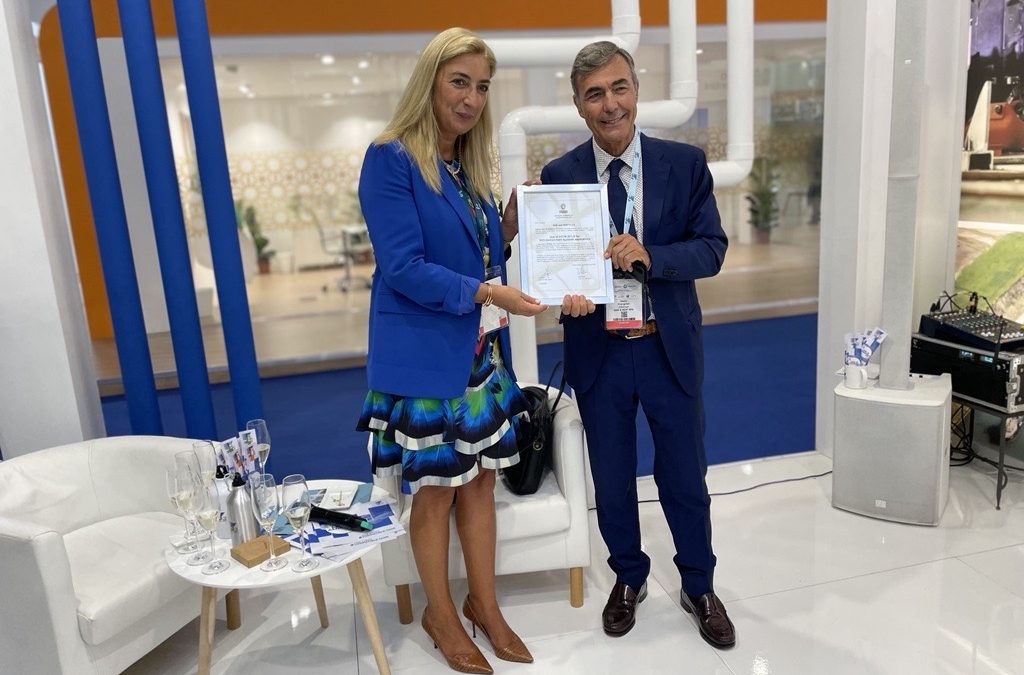Bureau Veritas (BV), a world leader in testing, inspection and certification, has awarded an Approval in Principle (AIP) to Gas and Heat (GH), a company specializing in the design, construction and integration of Liquefied Gas Handling Systems both for Marine and Onshore installations, for their flexible solution for the transport of LNG and ammonia.
Through a thorough study, GH supported by the BV team demonstrated that IMO Type C cargo/fuel tanks made of austenitic steel with a special grade can transport both LNG and ammonia for sea-going and inland navigation.
While LNG is expected to be widely used this decade, alternative fuels are under scrutiny to ensure their safe and sustainable use in the future. At the same time, shipowners are becoming more and more focused on multi-fuel supply systems able to handle two or more different fuels. As part of their ambitions to develop innovative solutions to help the industry anticipate the next wave of alternative fuels, GH embarked on a study to identify possible options and develop solutions.
GH has used austenitic steel with a special grade for LNG containment since its Approval by Bureau Veritas in June 2022, as an “alternative material” with respect to IGC/IGF Code. The compatibility of this material with ammonia has been verified by a specific Stress Corrosion Cracking test performed by GH and then approved by Bureau Veritas in August 2022.
For this innovative material in the shipping world, twelve specimens were prepared for the tests in accordance with ISO 16540. ISO 16540 provides guidelines to evaluate the corrosion of metals and alloys by determining their resistance to stress corrosion cracking using the Four-Point Bend method. This methodology includes procedures for metals that have no distinct yield point in their stress-strain behavior as well as metals with a distinct yield point.
Throughout the test, the specimens were loaded as Four-Point-Bend (FPB) to the Specified Minimum Yield Strength of the base material. Tests were then performed in three different conditions: at ambient temperature, -20C, and -33C, in an environment of pure ammonia. After the completion of all tests, each specimen was visually examined at x10 magnification by a stereoscopic microscope and subjected to fluorescent liquid penetrant examination to detect any visible surface crack. An additional tomographic scan was performed to ascertain that no inner crack was detected. The outcomes successfully demonstrated that cargo/fuel tanks made of austenitic steel can carry both LNG and ammonia, for seagoing and inland navigation.
BV was involved from the very earliest stages, validating the stress test methodology and reviewing each phase of the test. We confirmed that the applied methodology opens the way to design and build LNG/Ammonia tanks that comply with the international code for the construction and equipment of ships carrying liquefied gases in bulk (IGC Code) and the international code of safety for ship using gases or other low-flashpoint fuels (IGF Code), as well as applicable BV’s classification rules for seagoing and inland navigation.
Paillette Palaiologou, Vice President South East Europe, Black Sea & Adriatic Zone at Bureau Veritas Marine & Offshore, said: “While the shipping industry is facing many uncertainties, it is the role of class to support the industry in this period of change. I am proud of the work accomplished by both teams and the results are extremely positive for the industry. Providing different options will be key for industry stakeholders as they make decision. We look forward to collaborating with GH on new projects.”
Mauro Evangelisti, President of Gas and Heat SpA, said: “Innovation has always been and will remain our main focus. This study is part of the innovation journey the industry needs for a smart and sustainable transition to a greener future. We hope the use of this material will provide more cost-effective and safer components to the industry.”
GH has already secured one contract which includes the supply of cargo tanks for inland navigation of LNG/ammonia and one for a seagoing LNG/ammonia fuel supply system.
Source: Hellenic Shipping News






